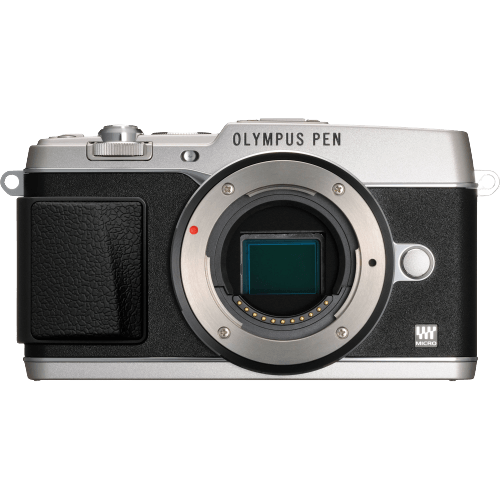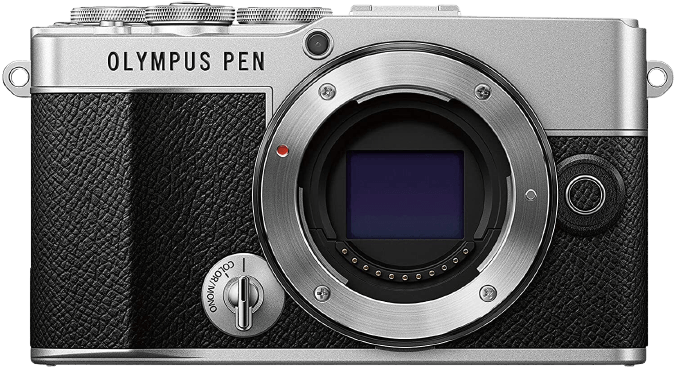Olympus PEN E-P5 vs Pen E-P7 Comparison
Olympus PEN E-P5

Olympus Pen E-P7

The Olympus Pen E-P7 outperforms the Olympus PEN E-P5 with a score of 63/100 compared to 53/100. Both cameras are mirrorless and were launched at a price of $1000. They share similar dimensions, but the E-P7 is slightly smaller and lighter at 118 x 69 x 38mm and 337g, while the E-P5 measures 122 x 69 x 37mm and weighs 420g.
The E-P7’s higher score shows its superiority in terms of features and performance. Its compact size and lighter weight make it more portable and convenient for users. On the other hand, the E-P5 might have some advantages, but they are not significant enough to outweigh the benefits of the E-P7.
Taking all factors into consideration, the Olympus Pen E-P7 emerges as the better choice due to its improved specifications and user-friendly design.
Olympus PEN E-P5 vs Pen E-P7 Overview and Optics
The Olympus Pen E-P7 outperforms the Olympus PEN E-P5 in optics, scoring 63/100 compared to the E-P5’s score of 55/100. Both cameras share several common specifications, including a CMOS sensor, Micro Four Thirds sensor size, Micro 4/3 lens mount, and image stabilization. However, there are key differences that set the E-P7 ahead in terms of optics.
The E-P7 boasts a higher megapixel count of 20, compared to the E-P5’s 16.1 megapixels. This difference allows the E-P7 to capture more detail in images, providing better overall image quality. Additionally, the E-P7’s TruePic VII processor is an improvement over the E-P5’s TruePic VI processor, contributing to enhanced image processing and performance. The E-P7 also has a slightly higher DXOMARK sensor score of 74, compared to the E-P5’s score of 72, indicating a marginally better sensor quality.
Despite the E-P7’s advantages, the E-P5 does have a slightly faster shooting speed of 9 frames per second, compared to the E-P7’s 8.7. This minor edge might be beneficial for capturing fast-moving subjects or situations where rapid continuous shooting is necessary.
Taking all factors into consideration, the Olympus Pen E-P7 is the superior camera in terms of optics, with a higher megapixel count, improved processor, and marginally better sensor score. The Olympus PEN E-P5, while still a capable camera, falls short in these areas but does offer a slightly faster shooting speed. Ultimately, the E-P7’s advantages in optics make it the better choice for those seeking higher image quality and performance.
Olympus PEN E-P5 vs Pen E-P7 Video Performance
The Olympus Pen E-P7 outperforms the Olympus PEN E-P5 in video capabilities with a score of 83/100, a significant 26-point difference from the E-P5’s score of 57/100. Both cameras share common features, such as time-lapse functionality built in, indicating their suitability for capturing the passage of time in a creative manner.
The E-P7 excels in video quality with a maximum resolution of 4K (3840 x 2160), while the E-P5 only supports Full HD (1920 x 1080). This difference in resolution allows the E-P7 to produce videos with sharper details and more vibrant colors. Additionally, the E-P7 boasts a higher maximum video frame rate of 60fps compared to the E-P5’s 30fps. This higher frame rate enables smoother motion capture and provides more flexibility for slow-motion video editing.
On the other hand, the E-P5 does not have any distinct advantages over the E-P7 in terms of video capabilities. The lower video resolution and frame rate result in a less impressive video performance compared to the E-P7.
Taking into account the aforementioned points, it is evident that the Olympus Pen E-P7 is the superior choice for video enthusiasts seeking high-quality video performance in a compact camera. The 4K resolution and 60fps frame rate contribute to its higher score and make it the preferred option for capturing detailed and smooth videos. Meanwhile, the Olympus PEN E-P5, despite its time-lapse functionality, falls short in delivering the same level of video quality and performance as the E-P7.
Olympus PEN E-P5 vs Pen E-P7 Features and Benefits
The Olympus Pen E-P7 emerges as the winner with a feature score of 70/100, while the Olympus PEN E-P5 has a score of 57/100. Both cameras share some common specifications, such as a 3-inch screen size, touchscreen capability, and WiFi connectivity. However, the E-P7 outshines the E-P5 in certain aspects, making it a better camera.
The E-P7 has a higher screen resolution of 1,040,000 dots compared to the E-P5’s 1,036,800 dots. This difference provides a slightly clearer and crisper display on the E-P7. The E-P7 also features a flip screen, which the E-P5 lacks. This flip screen allows for easier and more versatile shooting, especially in challenging angles or when capturing self-portraits. Additionally, the E-P7 has Bluetooth connectivity, enabling more seamless file transfers and remote control options, while the E-P5 does not offer this feature.
The E-P5, on the other hand, does not have any significant advantages over the E-P7 in terms of features. Both cameras have similar screen sizes, touchscreens, and WiFi connectivity, but the E-P5 falls short in screen resolution, flip screen functionality, and Bluetooth connectivity.
Considering the differences in feature scores and specifications, the Olympus Pen E-P7 is the superior camera due to its higher screen resolution, flip screen, and Bluetooth connectivity. While the Olympus PEN E-P5 shares some common specifications with the E-P7, it lacks the additional features that make the E-P7 a more versatile and user-friendly camera. Therefore, the Olympus Pen E-P7 is the better choice for photographers seeking advanced features and enhanced functionality.
Olympus PEN E-P5 vs Pen E-P7 Storage and Battery
The Olympus Pen E-P7 outperforms the Olympus PEN E-P5 in storage and battery with a score of 35/100 compared to the E-P5’s 21/100. Both cameras share a single memory card slot and accept SD, SDHC, and SDXC memory cards. The E-P7 has a slight advantage in battery life, offering 360 shots per charge, while the E-P5 provides 330 shots. Moreover, the E-P7 uses the BLS-50 battery type and features USB charging capabilities, which the E-P5 lacks, as it uses the BLN-2 battery type.
The E-P5 doesn’t offer any significant advantages in storage and battery over the E-P7. The E-P7’s longer battery life, USB charging, and compatibility with the faster UHS-II memory cards make it the superior choice in this aspect. Therefore, for users prioritizing storage and battery performance, the Olympus Pen E-P7 is the recommended option.
Olympus PEN E-P5 vs Pen E-P7 – Our Verdict
Are you still undecided about which camera is right for you? Have a look at these popular comparisons that feature the Olympus PEN E-P5 or the Olympus Pen E-P7:

